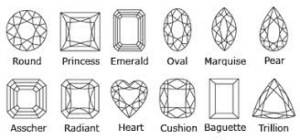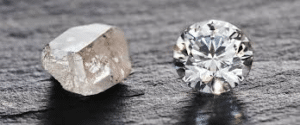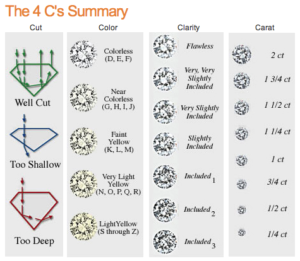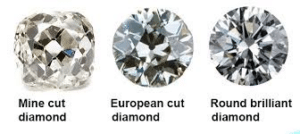About Gemstones
Diamond Classification, THE FOUR C’s
Diamond professionals use the grading system developed by GIA in the 1950s which established the use of four important factors to describe and classify diamonds: Clarity, Color, Cut, and Carat Weight. Diamonds can be fashioned into a variety of shapes and still be beautiful.
These four classifications together will determine the overall price of a stone.
Clarity: From Flawless to Included. This rating refers to the absence of inclusions or blemishes in the stone.
Color: From Colorless to Yellow. Diamonds rated using a scale from D to Z. D being colorless (price is higher for this color) to Z.
Cut: The shape of the diamond and how it reflects light.
Carat Weight: The diamond’s weight.
Colored Stones
In modern use, the precious stones are diamond, ruby, sapphire and emerald, with all other gemstones being semi-precious.
Types of Diamonds
The most popular diamond colors are pink, blue, brown, yellow, orange, green and red. Yellow is the most common naturally occurring color in a diamond. White, red, blue and green diamonds are very rare diamond types.
We can divide diamond cuts to several types including: Princess, Cushion, Asscher, Radiant, Emerald, Round, Oval, Marquise, Pear, Half Moon, Triangle, Straight Trillion, Curved Trillion, Calf, Heart Cut and Miners Cut.

The History of Diamond Cutting
In the 16th century, tools were invented to cut facets into diamonds. The rose cut and transition cut were added to the diamond cutter’s repertoire. It was at this time that early bruting, faceting, and polishing of diamonds began to be used by European cutters.
Old Mine Cut
Until the mid-1900s, if someone needed a diamond, it had to be cut and measured by hand. The diamond cutters at the turn of the century used only their eyes to measure for precision. They cut and polished their diamonds to maximize sparkle against candlelight.
Developed in 18th century, Europe old mine cushion cuts were not round but had a slightly curved edge which formed a soft square. They were made with a variety of facet patterns but always with a small table, high crown, and larger culet. Giving them an architectural look.
Old European Cut
The process and the development of The Old European cut diamond made drastic changes to diamond cutting. The old European cut diamond is the standard round diamond that was made between 1890 – 1930. The old Euro is very popular among vintage jewelry collectors. From the old mine cut diamonds to Old European cut the European Cut led to the modern, round brilliant cut diamonds.
Old European cut diamonds are also known as old euro, round old mine, and European cuts. The Old European cut diamonds were handcrafted from 1890-1930s.







